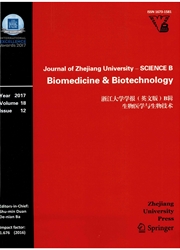

 中文摘要:
中文摘要:
很多植物 microRNAs (miRNAs ) 现在在 miRBase 被记录,在哪个之中仅仅 30 为茄属 lycopersicum (西红柿) 。清楚地,有影响深远的需要在各种各样的生理、病理学的条件下面在这重要庄稼识别并且介绍 miRNAs 的表示。在这研究,我们使用了一在里面 situ 综合了植物 miRNAs 的特定的 microarray 与黄瓜马赛克病毒(CMV ) 感染了在西红柿植物的叶子检验表示和 miRNAs 的时间的存在。后面的计算顺序相同搜索和发卡结构预言,我们识别了三新奇西红柿 miRNA 先锋基因。我们的结果也显示出那,根据发展中的叶子的显型,西红柿 miRNAs 是在植物开发的不同阶段表示的差别,那 CMV 感染能导致或压制 miRNAs 以及在许多底层通常在场的起来调整一些星 miRNAs ( miRNA *s )的表达式。结果显示病毒感染得到的发展异例可以被更复杂的生物过程引起。
 英文摘要:
英文摘要:
A large number of plant microRNAs (miRNAs) are now documented in the miRBase, among which only 30 are for Solanum lycopersicum (tomato). Clearly, there is a far-reaching need to identify and profile the expression of miRNAs in this important crop under various physiological and pathological conditions. In this study, we used an in situ synthesized custom microarray of plant miRNAs to examine the expression and temporal presence of miRNAs in the leaves of tomato plants infected with Cucumber mosaic virus (CMV). Following computational sequence homology search and hairpin structure prediction, we identified three novel tomato miRNA precursor genes. Our results also show that, in accordance with the phenotype of the developing leaves, the tomato miRNAs are differentially expressed at different stages of plant development and that CMV infection can induce or suppress the expression of miRNAs as well as up-regulate some star miRNAs (miRNA*s) which are normally present at much lower levels. The results indicate that developmental anomalies elicited by virus infection may be caused by more complex biological processes.
 同期刊论文项目
同期刊论文项目
 同项目期刊论文
同项目期刊论文
 Differential effects of Cucumber mosaic virus satellite RNAs in the perturbation of microRNA-regulat
Differential effects of Cucumber mosaic virus satellite RNAs in the perturbation of microRNA-regulat 期刊信息
期刊信息
